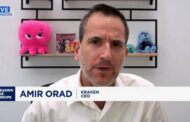3alexd
Eastman Chemical Corporation is a specialty chemical company with four business segments: Advanced Materials (including Additives and Functional Products), Chemical Intermediates and Fibers. It has facilities in 12 countries. It competes with many other chemical companies.
Dividend yield for the company is 3.8%.
Divide revenues from markets into
*15% Transportation (with an emphasis on EVs).
*12% Consumer durables and electronic products
*12% Building and Construction
*50% of stable end markets
Investors are advised to be aware that the company expects continued weakness across virtually all its markets for 2Q23 at its investor call scheduled in April 2023.
Eastman’s earnings per share for the past twelve months is $5.61. The average analyst’s expected 2023 earnings per share is $40 higher at $7.85/share. The average analyst’s 2024 EPS estimate is also 60% higher at $8.97/share.
The demand for automotives and fibers is holding steady, while the demand for construction has dipped. Eastman faces, like other companies, improved margins due to lower feedstock costs (especially petrochemicals), and energy costs, compared to the year 2022.
Investors in specialty chemicals who are looking for capital appreciation during the economic recovery should consider Eastman Chemical.
The 2Q23 earnings date for the company is the last week in July 2023.
Results and guidance for the First Quarter of 2023
Eastman Chemical has reported $2.4 billion in sales for the 1st quarter of 2023. This compares to $2.7 billion from 1Q22. The earnings before interest and tax were $246 millions, compared with $333 million in the same quarter last year. Earnings per Share (EPS) was $1.12 for the quarter, compared with $1.80 in 1Q22.
The company reported an improvement in earnings from 4Q22 to 1Q23 due to lower costs and the ability to maintain prices despite destocking by customers.
It is expected to reduce costs by over $200 million net of inflation. One of its initiatives is “the circular economy platform,” which uses recycled materials like waste plastics.
The four divisions are: Advanced Materials (Adjustments and Functional Products), Chemical Intermediates and Fibers.
Eastman Chemical and Starks Energy Economics, LLC
Eastman Chemical expects to see a subdued second quarter. The company’s demand depends on the economy. Mark Costa, Eastman’s CEO and Board Chair, cited the $200-million cost structure savings along with lower raw materials, energy and distribution costs. “We delivered solid first-quarter Fibers results and are well-positioned to achieve significant earnings growth in this segment for the full year as margins improve. The demand for many of our products is weak, especially in consumer durables, building and construction and other end markets. We expect inventory to continue to be destocked in the second quarter. We continue to anticipate that adjusted 2023 earnings per share will grow between 5 and 15%, excluding a pension headwind of approximately $0.75. We are also committed to implementing a variety of measures that will deliver $1.4 billion in operating cash flow by 2023.
Operation
Eastman Chemical operates 35 manufacturing plants in 12 countries. Eastman Chemical has 35 manufacturing facilities in twelve countries.
*US: 16.
*Europe: 9.
*Asia: 6.
*Latin America: 2.
Investors can refer to the latest 10-K of the company for more details. Below are a few thumbnails. These are very condensed samples that do not represent any particular industrial process.
Advanced Material: a.) advanced interlayers uses key materials such as vinyl acetate to make automotive safety glasses; b. performance films uses key materials such as polyethylene terephthalate to make paint protection film; c. specialty plastics uses key materials, like cellulose to make consumer packaging.
Functional Products and Additives: a. animal nutrition uses key substances like propane to preserve and maintain hygiene. b. care additives are made from key substances like alcohols, which can be consumed at home and by individuals. c. coating additives make use of key materials such as propylene for architectural coatings. d. specialty fluids and energy products use key chemicals like benzene for commercial aviation.
Intermediates: A) Functional amines are used to produce energy from key materials such as ethanol; B) Intermediates are made using key materials, like propane and ethane, for industrial chemicals; C) Plasticizers make use of key materials in packaging like propylene.
Fibers A-C) acetate tow and yarn, acetate fiber and fiber, as well as acetyl chemicals products, use key materials such as methanol for cigarette filters.
Costs of Commodity Feedstocks
Eastman Chemical relies on a variety of feedstocks. Many of these are petrochemicals that are derived from the natural gas liquids made with oil and natural gas.
The cost of gas has increased dramatically in Europe in recent years due to the reorganization of hydrocarbon exports after the Russian invasion of Ukraine, and in particular the shortage of natural gases in Europe. Since then, they have settled at a lower level. The Federal Reserve has raised interest rates in order to combat inflation and slow the economy. Eastman benefits from lower costs, but faces challenges due to reduced demand on some markets.
The graphs show marked improvements in costs (for natural gas) over the past two years and for natural gas liquids (1 year). Natural gas is an important input in the price of electricity. Lower natural gas prices reduce electricity costs.
EIA
EIA
Competitors
Eastman Chemical Company has its headquarters at Kingsport, Tennessee.
There are many competitors, and they differ in product lines. There are many competitors, and they vary by product line. Chemical, Saudi Basic Industries and Daicel Chemical.
Governance
Institutional Shareholder Services, or ISS, ranks Eastman’s governance overall on June 1, 20,23 as a 5. This includes sub-scores for audit (3), board (6) and shareholder rights (6). According to the ISS scale 1 is lower governance risk, and 10 is higher governance risk.
Eastman’s ESG rating from Sustainalytics was “medium” in January 2023 with a risk score total of 25 (43rd per centile). Environmental risk is 12.0; social 5.4; and governance 7.2. On a scale from 0 to 5, the level of controversy is 2. Animal testing is the only area of risk.
At June 15, 2023, shorts accounted for 1.35%.
Insiders own a very small percentage (0.69%).
The beta of the company is 1.52. This means that the stock moves in the same direction as the market, but with greater volatility. This is to be expected for a company dealing with cyclical chemicals.
Vanguard was the largest institution at 12.6%. BlackRock was at 7.2%. State Street was at 4.2%. Putnam Investments, 3.5%. Morgan Stanley, 3.3%. These institutions include index funds that are matched to the market.
Highlights of the Financial Markets and Stocks
Stock closing price is $83.72 at the end of June 2023.
The price of the share is $82.18. This is 82% less than its 52-week peak. The average price target for the next year is $94.14/share, which is 89% higher.
Starks Energy Economics, LLC
The trailing 12-months (TTM), EPS is $5.61, with a ratio of price to earnings of 14.9. Analysts’ average estimates of 2023 EPS are $7.85, and 2024 EPS are $8.97. This ranges from 9.3-10.7 for the forward price/earnings.
Return on Equity is 12.4% and TTM return is 5.0%.
TTM operating cash flows is $956 millions and leveraged cash flow $1.3 billion.
The company’s assets and liabilities were $14.98 billion at March 31, 2023. This is a ratio of 65%.
The liabilities are divided into two categories: current liabilities ($3,0 billion) and long-term debt ($4.6 billion).
The ratio between debt and EBITDA is 3.4.
The book value of $43.54 per share is slightly above the market price and indicates a positive investor sentiment.
Below are graphs that compare the three-year stock price history of Eastman Chemical to the Dow Jones Industrial Average. ( DJI). Eastman Chemical, which is the most affected by economic conditions in general, has not shown as much of a recent recovery.
YCharts
The ratio between the enterprise value of $14.9 billion and EBITDA for the trailing 12 months of $1.7 billion of this company is 8,7. This ratio is below that of a preferred ratio, which should be less than 10. It indicates a bargain.
Dividends of $3.16/share provide a yield of 3.8%.
Eastman offers a opportunistic program of share repurchases to offset dilution.
Eighteen analysts have given the company a mean analyst rating of 2.3. This is closer to “buy”, but tending towards “hold”.
Positive and negative risks
Eastman Chemicals’ major risk is a slow recovery in the global economy, as its products are linked to autos, housing and other industries.
The company is also exposed to the higher costs of Europe and the currency risks that come with international operations.
The current and anticipated lower costs of natural gas, liquid natural gas and petrochemical feedstocks (than last year) are positive risks.
The competitive threat from other chemical companies in the US as well as abroad is fierce. Eastman tackles this issue with innovative technologies and solutions tailored to customers.
Recommendations to Eastman Chemical Corporation
Investors interested in specialty chemicals should consider buying shares of Eastman Chemical, despite the 1Q23 earnings decline and some headwinds expected for 2Q23.
It has a strong US presence with its international diversification. In addition, the company is benefiting from lower electricity, natural gas, and natural gas liquids costs. This benefit is being compounded by a $200 million cost-cutting program.
It admits that the first half of 2023 will be a challenging period due to destocking by customers and a softening demand, especially in construction. Its revenue is mostly from stable markets and it has implemented a circular economy program.
The estimated growth in EPS for the past twelve months for 2023 is 40% and 60% respectively.
Eastman Chemical
Editor’s note: This article discusses securities that are not traded on major U.S. stock exchanges. Be aware of the risks involved with these stocks.









